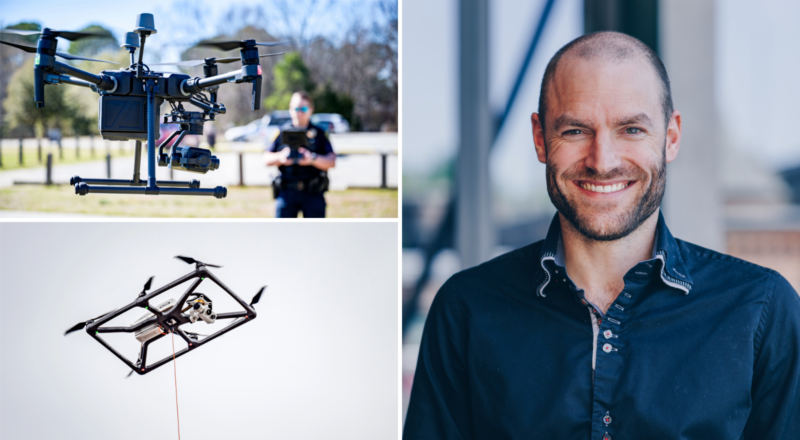In its latest Blog post*, ID2Move by CAP Innove looks at the impact of drones on global security. We spoke to Emilien Watelet, Director of ID2Move.

Drones became popular and accessible in the 2010s and are now used for a variety of missions. Security is one of them.
How do drones impact security in Belgium?
It’s a huge topic (he smiles)! Security applications were one of the first ‘missions’ for drones, because they made it possible to monitor larger areas with less human intervention.
In Belgium, it’s mainly the police who use drones to monitor large gatherings (protests, sporting events, etc.) for crowd management. Many police forces have their own drones which they use to provide security at events to support intervention teams (e.g. hostage-crisis, Fort Chabrol, etc.).

Firefighters also use drones in the event of a fire to detect the presence of gas bottles, temperature levels, gas emissions, etc. Again, we are providing an extra layer of safety for humans, so that they have as many parameters as possible to make the most appropriate decisions.
At the same time, drones are also used to provide security in private areas, such as industrial sites, where they replace fixed cameras and/or the rounds of security guards tasked with remotely monitoring the site. In this specific case, we mainly use « wired/tethered » drones, i.e. drones that are powered by a cable, which means that they can operate 24/7 and can scan much larger areas (such as port terminals, etc.)

Can we talk about the new applications that are being developed in terms of security?
I think it’s important to talk about anti-drone solutions, which aim to prevent or even combat drone incursions into the airspace of nuclear power plants, airports, stadiums and so on.
To give an example that has been in the headlines, I would mention the delivery of weapons, money, drugs, etc. to prisons by drones. It’s important to protect against this kind of intrusion!
Various anti-drone technologies are now being developed to detect, track, identify and destroy drones (anti-drone bazookas with or without nets, etc.). Some technologies are used sparingly in Belgium, such as frequency jamming, which has the effect of jamming all the frequencies in a geographical area, thus disturbing the population.
Drones with AI?
Yes, of course, most commercial drones are equipped with what you might call ‘artificial intelligence’. Today, a drone can detect movement and metal in a crowd, but I’m not sure the level of accuracy would allow it to identify a gun, a bicycle, or any other metal object.
On-board AI applications are more focused on the use of thermal cameras, motion analysis, counting, obstacle detection, etc.
Now, a drone is a long way from being able to make autonomous decisions, such as deciding to bomb a location it has defined as a drop zone according to set parameters. We’re getting there but replacing human decision-making with drone decision-making is not (yet) on the agenda. Not even for defense drones.
In agriculture, for example, drones are being used to detect waste before harvesting. This is a concrete example of a drone using AI, but we are getting off topic…
What about the future?
As legislation becomes more permissive, there’s a good chance that the use of drones will intensify and diversify. As far as security is concerned, I’m convinced that in the long term we’ll see drones being used in the various sectors we’ve mentioned, including prisons, public buildings, industrial sites, sensitive sites (e.g. nuclear power stations), and so on. As for the applications, it will always be up to the users to define them!
The main obstacle to the use of drones remains the lack of awareness among future users. A cost/benefit analysis remains essential and turning to specialists allows defining the best response to the need.
* https://www.id2move.eu/how-can-drones-influence-global-security/


